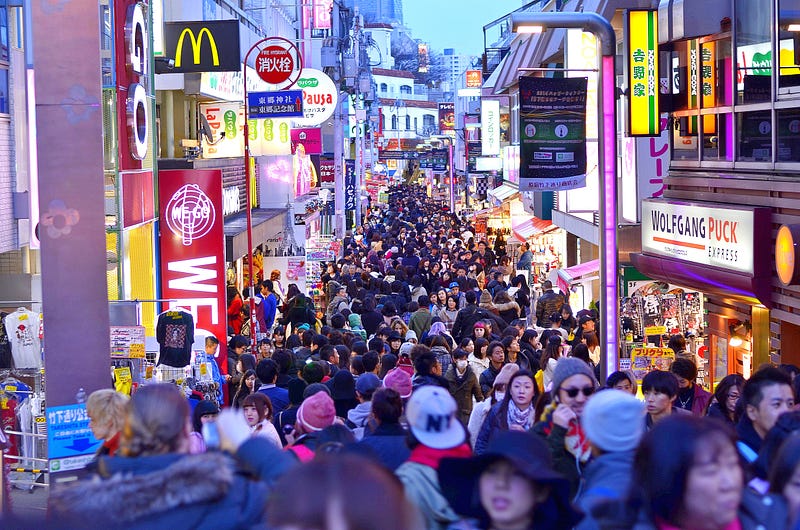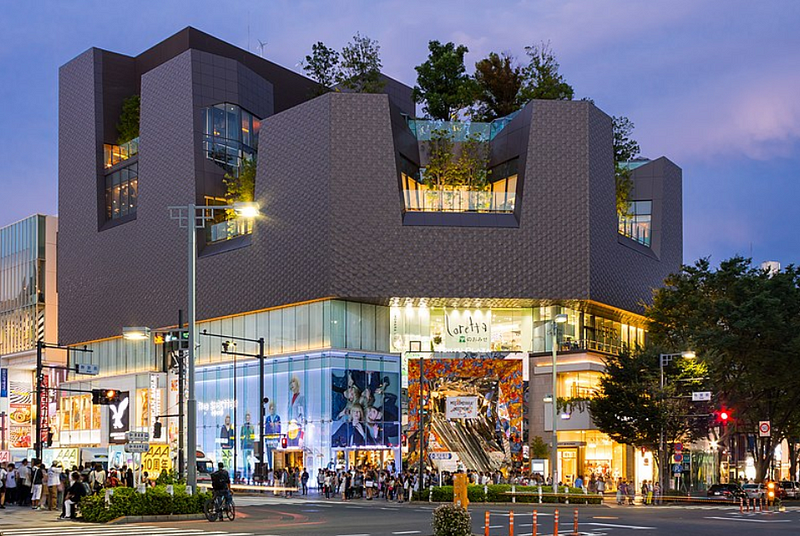Exploring Harajuku: Why the Metaverse Can't Compete with Reality
Written on
The Allure of Harajuku vs. Metajuku
Recently, while watching The Late Show, I came across a mention of a Metaverse rendition of Harajuku, dubbed Metajuku, located in Decentraland—one of the leading metaverse platforms. Stephen Colbert even shared that JPMorgan has opened a lounge there. The thought of shopping with friends in a virtual Harajuku sounded intriguing, so I quickly searched for it.
As a native of Japan, I must say: it bears little resemblance to the actual Harajuku! It seems the designers may not have fully appreciated the streets of Harajuku, as the virtual version resembles Shinjuku or Akihabara, where izakaya and electronics shops dominate the landscape. To me, Harajuku and Shinjuku are worlds apart, despite being just a couple of stops apart on the Yamanote line. Let me guide you through the authentic Harajuku experience.
1. A Fashion Haven for Everyone
Harajuku stands as the cultural heartbeat of Japan, particularly in fashion. This district constantly evolves, with a mix of trendy boutiques and vintage kimono shops. Notable shopping spots include Laforet Harajuku and Tokyu Plaza.
It's nearly impossible to spend an entire day without visiting Kiddy Land for some Hello Kitty merchandise. While some suggest checking out Omotesando Hills for luxury brands like Valentino and Harry Winston, my teenage self often strolled from Harajuku to Shibuya, exploring the thrift stores along the way. Shops like Chicago and Santa Monica still thrive today, alongside Flamingo and Kinji.
For those seeking affordable kimono options, vintage shops like Chicago are excellent. Although Oriental Bazaar, known for its extensive vintage kimono collection, is currently closed for renovations, it is set to reopen in 2022.

The area encourages youth to express themselves freely, unlike schools that mandate uniforms. Here, you can find truly unique styles instead of the mass-produced outfits prevalent in the Metaverse.
2. Nature and Community Spaces: Meiji Jingu and Yoyogi Park
While Metajuku may be focused on cryptocurrency without a nod to nature, Harajuku is grounded in reality with the serene Meiji Jingu and its expansive 70-hectare forest surrounding the Shinto Shrine. During the New Year’s holiday, pre-pandemic, over three million people flocked there to make wishes.

Adjacent to this shrine is Yoyogi Park, a spacious 54-hectare area that regularly hosts events and flea markets, enhancing your visit. One notable event is Tokyo Rainbow Pride, which aims to raise awareness for the LGBTQ community. Although it has been virtual in the past two years, live and remote events are planned for 2022.
3. Cafes and Sweet Spots for Socializing
Harajuku is teeming with diverse cafes and dessert shops. Until recently, crepes piled high with whipped cream and fruits were a staple of this area. If you're looking to delve into the café culture, Merry-Go-Round Sweets offers a delightful Instagram-worthy experience.
For pancake enthusiasts, you can indulge in global flavors at Eggs’n Things from Hawaii, Bills from Sydney, and, if you're willing to venture to Aoyama, Clinton St. Baking Company from New York, which serves the most delectable pancakes—I'd gladly savor their maple butter pancakes for a lifetime.
Though many coffee shops and eateries come and go, Mizuho remains a comforting stop for traditional sweets, such as daifuku and monaka filled with sweetened red bean paste.
Conclusion: The Vibrant Culture of Harajuku
While Metajuku features izakaya and anime stores, Harajuku is a treasure trove for teenagers, offering an eclectic mix of old and new, high and low. It’s a place where you can find everything from vintage band t-shirts to designer handbags.
Tokyoites each carry their own memories of Harajuku, with its rich cultural diversity shining brightly for the younger generations. Unless the Metaverse can replicate this vibrant culture, it will struggle to appeal to discerning individuals.
So, would you prefer to lounge in the JPMorgan space and gaze at a digital portrait of a bank executive in Metajuku, or immerse yourself in one of the most exciting districts in the real world?
If you enjoyed this article, explore more works by the author.
5 Reasons Why We Don’t Need Any More Starbucks
And all the better coffee shops in Japan
Please follow me for more stories about Japanese culture, travel, and parenting. You can also subscribe via the referral link, which supports me without any additional cost to you.